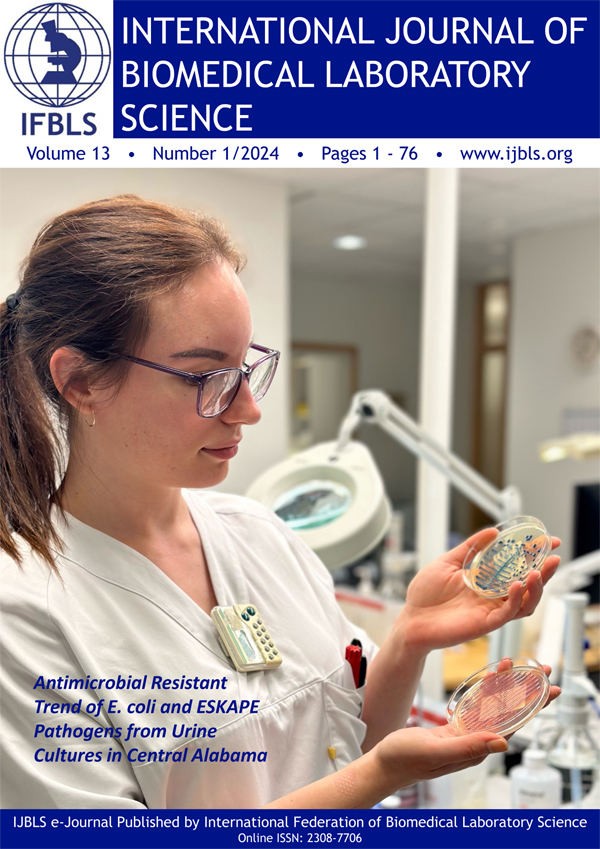Abstract
The purpose of this study was to assess the influence of frequency of blood donation on iron stores in 163 male blood donors. Forty one were 1st time (control group), Thirty-eight were 2nd time, thirty-eight were 3rd time, thirty one were 4th time and fifteen were 5th time in UCTH Calabar. Packed cell volume (PCV) and haemoglobin (Hb) concentration were determined using particle counter model PCE-210, while serum iron (SI) and total iron binding capacity (TIBC) were determined using kits purchased from Human Diagnostics (D-65205) Wiesbaden - Germany. Transferrin saturation (TS) was determined by computation of serum iron concentration and total iron binding capacity values while serum ferritin (SF) was determined using enzyme linked immunoassay method kit purchased from Boehringer Mannheim Immunodiagnostics (Cat No. BC -1025 and BC - 1120) from Germany. The PCV, Hb, SI, TIBC, TS and SF of 2nd, 3rd, 4th and 5th time blood donors were significantly reduced (P>0.001) progressively as frequency of donation increased when compared with the 1st time blood donors. However, their mean cell haemoglobin concentration (MCHC) revealed no significant change (P>0.001) as frequency of donation increased. A strong and significant positive correlation existed between SF and PCV, SF and Hb (P< 0.05). 10.5%, 41.9% and 60% of 3rd, 4th, and 5th time blood donors within the year respectively had deficicient iron stores with transferrin saturation of <16%. It is the conclusion of this study that increased frequency of blood donation reduced the iron stores of donors. Therefore, donors should be advised on eating balanced diet as well as the use of iron supplements.
Key words: Blood donors, iron stores, serum iron, transferrin saturation, serum ferritin
Frequency of Blood Donation and Iron Stores of Blood Donors in Calabar, Cross River, Nigeria


